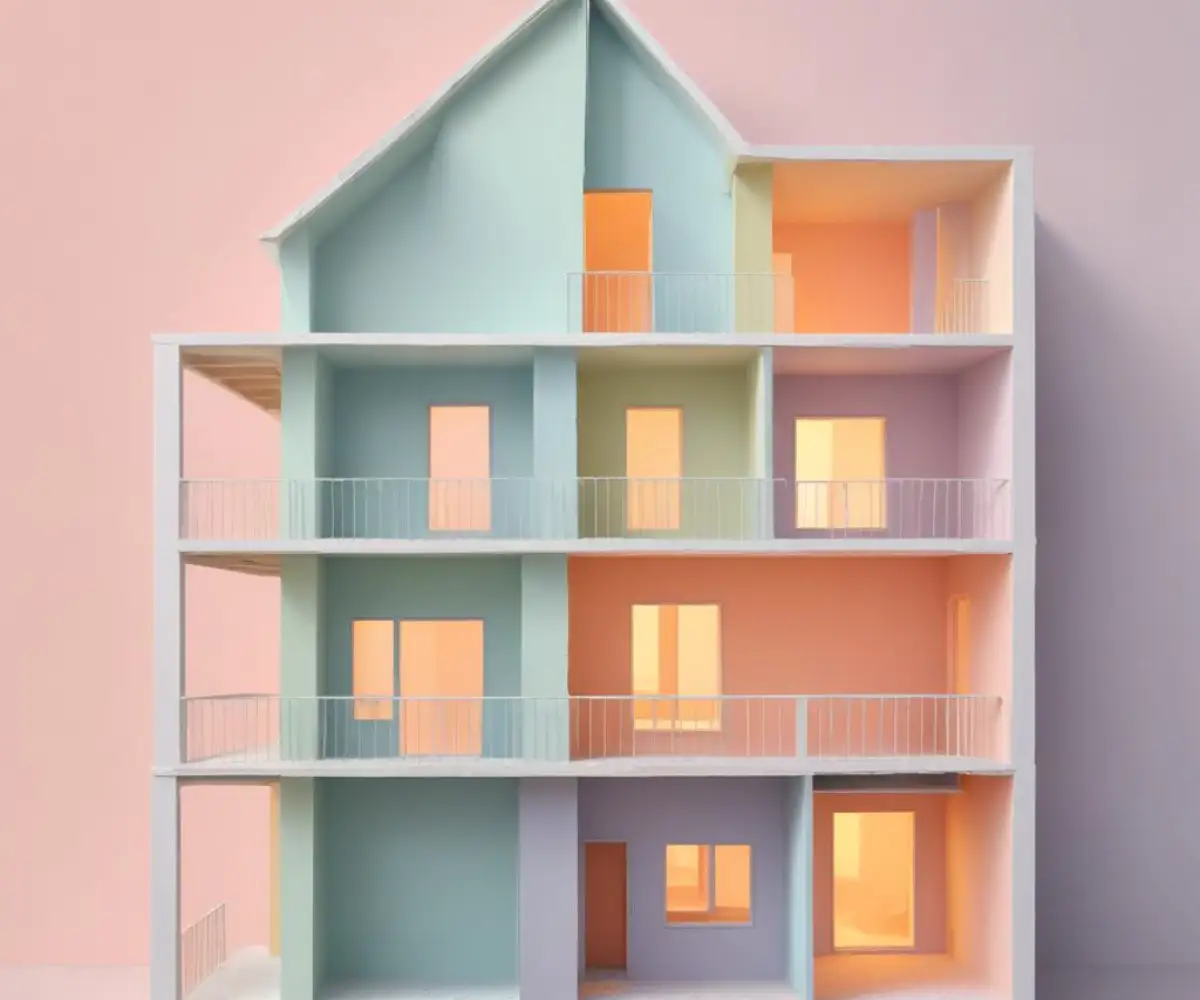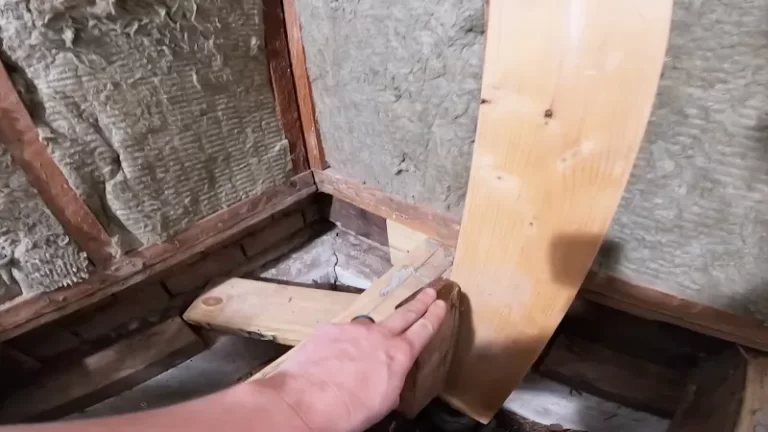Walls Between Townhouses: Your Ultimate Guide to Privacy & Quiet
Living in a townhouse offers a unique blend of community and independence. However, the one feature that defines this lifestyle—the shared wall—can often become the single biggest source of frustration. If you can hear your neighbor’s conversations, television, or footsteps as if they were in the next room, you’re not alone. This lack of acoustic privacy is a widespread problem that can disrupt your peace and create tension.
The core issue often lies in the construction of these shared walls. While they are built to code, the minimum requirements are often focused more on fire safety than on soundproofing. This leaves many residents feeling like they have “paper-thin” walls, leading to a daily struggle for quiet enjoyment of their own home.
This comprehensive guide will demystify the walls between townhouses. We will explore exactly how they are built, why they often fail at blocking noise, and provide a range of actionable solutions, from simple DIY fixes to professional-grade renovations, to help you reclaim your tranquility and privacy.
You'll Learn About
Decoding the “Party Wall”: What Separates You and Your Neighbor?
The wall you share with your neighbor is technically known as a party wall or a demising wall. Its primary legal and structural purpose is to create a clear boundary and provide fire separation between two distinct properties. In the event of a fire in one unit, this wall is designed to prevent flames from spreading to the adjacent unit for a specified period, typically one to two hours.
Building codes are stringent about this fire-resistant capability. However, the requirements for sound insulation are often less rigorous. This is the critical gap where problems arise for homeowners. A wall can be perfectly safe according to fire code but woefully inadequate for blocking everyday household sounds.
Common Types of Townhouse Wall Construction
Understanding how your party wall is constructed is the first step toward finding an effective soundproofing solution. Several methods are common in townhouse construction, each with its own level of acoustic performance.
- Single Stud Wall: This is the most basic and least effective for sound control. It consists of a single row of wood or metal studs with drywall attached to each side. Sound vibrations travel easily through the shared studs from one side to the other.
- Staggered Stud Wall: This method uses a wider base plate (e.g., a 2×6) and staggers the studs so that the drywall on one side is not attached to the same studs as the drywall on the other. This creates a break in the path for sound vibrations, offering a moderate improvement in sound isolation.
- Double Stud Wall: Considered one of the best common methods, this involves building two completely separate walls side-by-side with an air gap in between. Since the two walls do not touch, the transmission of sound is significantly reduced.
- Concrete Block Wall (CMU): Often found in older or more robust constructions, a solid concrete block wall provides excellent sound blocking due to its sheer mass. However, even these can transmit low-frequency sounds and vibrations.
- Gypsum Shaft Liner Systems: A modern approach involves using thick panels of gypsum core (shaft liner) held in place by steel studs. This assembly provides a strong fire rating and good sound control.
No matter the construction type, penetrations for electrical outlets, light switches, and vents can create weak spots for sound to leak through, compromising the overall performance of the wall.
The Science of Sound: Understanding STC Ratings
To quantify how well a wall blocks sound, the construction industry uses the Sound Transmission Class (STC) rating. This number indicates a partition’s ability to reduce airborne noise. The higher the STC rating, the more effective the wall is at blocking sound.
- STC 25: Normal speech can be clearly heard and understood.
- STC 35: Loud speech is audible but not intelligible.
- STC 45: Loud speech is faint, and privacy is generally maintained. Building codes often require a minimum STC of 45-50 for party walls.
- STC 50+: Loud sounds are barely audible. This is considered a good level of soundproofing for residential environments.
Many homeowners are surprised to learn that their wall, which meets the minimum code requirement of STC 45, still allows them to hear their neighbors. This is because the rating system is most effective for speech frequencies, but less so for low-frequency sounds like bass from a stereo or high-frequency impact noises like a dropped object.
More Than Just Noise: The Unseen Problems with Shared Walls
While noise is the most common complaint, poorly constructed or sealed party walls can lead to other significant issues that affect your health, safety, and comfort. These are the problems that few people consider until they experience them firsthand.
One of the most critical functions of a party wall is fire safety. Building codes mandate that these walls have a fire-resistance rating, meaning they can contain a fire for a specific duration, allowing occupants time to escape. Assemblies often include special fire-rated drywall and fire-blocking within the wall cavities. If these systems are compromised by renovations or poor initial construction, the safety of both households is put at serious risk.
Another often-overlooked issue is the transmission of odors and pests. Tiny, unsealed gaps and cracks around pipes, vents, and baseboards can create veritable highways for cooking smells, smoke, and even pests like insects and rodents to travel from one unit to the next. What starts as a minor annoyance can quickly become a major quality-of-life problem.
Your Action Plan: How to Soundproof Your Townhouse Wall
Confronting a noise problem can feel daunting, but there are solutions available for every budget and skill level. The key is to address the primary ways sound travels: through the air (airborne noise) and through the structure itself (structure-borne or impact noise). Effective soundproofing often involves a combination of adding mass, decoupling structures, and sealing air leaks.
Step 1: Assess the Situation
Before you begin, try to identify the type and source of the noise. Is it muffled conversation (airborne)? Or is it the thud of footsteps from their stairs (structure-borne)? Also, inspect your side of the wall. Check for any visible gaps around electrical outlets, baseboards, or where the wall meets the floor and ceiling. These are common sound leakage points.
Step 2: Simple, Low-Cost DIY Solutions
If the noise is minor, you may be able to achieve significant improvement with a few simple adjustments. These methods focus on absorbing sound within your room and sealing small air gaps.
- Rearrange Your Furniture: Placing a large, dense piece of furniture like a heavy bookcase against the shared wall can add mass and help block some sound. Filling the bookcase with books adds even more density.
- Use Acoustic Sealant: This is one of the most cost-effective soundproofing tools. Use acoustic caulk to seal every single gap around the perimeter of the wall, including around electrical boxes, light switches, and baseboards. Sound travels like water and will find any crack to leak through. Addressing these leaks can sometimes be surprisingly effective. If you notice other issues, like your Glade plug in smoking, it’s a reminder to be cautious around electrical outlets.
- Hang Sound-Absorbing Decor: While not true “soundproofing,” adding soft surfaces to your room can reduce echo and absorb some sound energy. Consider thick curtains, tapestries, or acoustic foam panels.
Step 3: Advanced Soundproofing Construction
For persistent and loud noise problems, more intensive construction is required. These methods involve opening up or adding to the wall to fundamentally change its ability to block sound. Always check with your HOA and local building codes before starting major renovations.
These solutions can be complex, and hiring a professional contractor with experience in acoustics is highly recommended. The goal is to add mass and, crucially, to decouple your side of the wall from the building’s framing, which stops vibrations in their tracks.

Adding Mass and Damping
The simplest major upgrade is to add another layer of drywall to your side of the wall. For best results, use 5/8-inch thick fire-rated drywall, which is denser than standard 1/2-inch drywall. The real magic happens when you introduce a sound-damping compound, like Green Glue, between the existing drywall and the new layer. This compound converts sound vibrations into a tiny amount of heat, effectively killing the noise.
Decoupling with Resilient Channels or Clips
Decoupling is the principle of separating your wall’s drywall from the studs. This is achieved by installing thin metal “resilient channels” horizontally across the studs. The drywall is then screwed into the channels, not the studs. This creates a flexible connection that makes it very difficult for vibrations to pass through the structure. An even more robust solution involves using sound isolation clips and hat channels, which provide superior decoupling.
Improving Insulation
If the wall is open, ensure the stud cavities are filled with the right kind of insulation. Standard thermal insulation helps, but for sound, a dense material like mineral wool (such as Roxul) or dense-pack cellulose is far more effective at absorbing sound waves within the wall cavity.
Older homes sometimes feature unique wall coverings. If you’re renovating and discover something like vintage paneling, you might wonder where to buy 70s wood paneling to match it, but remember that modern materials offer better acoustic performance.
Comparing Soundproofing Methods
Choosing the right approach depends on your budget, tolerance for disruption, and the severity of the noise issue. Here is a comparison of the most common methods for improving a shared wall.
| Method | Estimated Cost (Materials) | Effectiveness (STC Gain) | Complexity |
|---|---|---|---|
| Acoustic Sealant & Outlet Gaskets | $20 – $50 | Low (1-3 STC points) | DIY Friendly |
| Add 5/8″ Drywall with Green Glue | $1.50 – $2.50 per sq. ft. | Medium (8-12 STC points) | Moderate DIY / Handyman |
| Resilient Channels & New Drywall | $2.00 – $3.50 per sq. ft. | High (10-15 STC points) | Professional Recommended |
| Isolation Clips & Hat Channel System | $3.00 – $5.00 per sq. ft. | Very High (15-20+ STC points) | Professional Installation |
| Build a Decoupled “Room-Within-a-Room” Wall | $5.00 – $10.00+ per sq. ft. | Maximum (20-25+ STC points) | Professional Installation |
When to Call a Professional
While some soundproofing tasks are suitable for a handy DIYer, major construction requires expertise. If your plan involves removing drywall, altering framing, or dealing with electrical wiring, it is wise to hire a qualified contractor. An acoustic consultant can also be invaluable in diagnosing the specific noise problem and recommending the most effective solution, ensuring your investment yields the peace and quiet you desire.
Unusual sounds, such as a loud banging noise in the chimney, are a separate issue that may require a specialist, but they highlight how complex home acoustics can be. A professional can help differentiate between structural noise, flanking noise (sound going around the wall), and direct transmission.
Conclusion: Taking Control of Your Home Environment
The walls between townhouses are more than just physical dividers; they are critical components that impact your privacy, safety, and daily comfort. While many are built to minimum standards that prioritize fire safety over acoustics, you are not powerless against noise intrusion. By understanding the principles of sound transmission and the construction of your party wall, you can make informed decisions to improve your living situation.
From simple, strategic placement of furniture and diligent sealing of air gaps to advanced construction techniques that add mass and decouple structures, a solution exists for nearly every scenario. Investing in soundproofing is an investment in your own well-being, transforming your house from a source of stress into a peaceful, private home.

